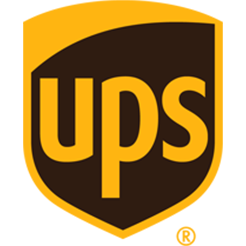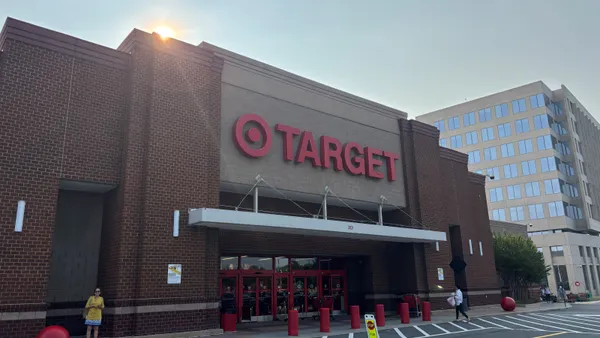Shoppers today enjoy a proliferation of online shopping opportunities. To earn customers’ loyalty and maximize competitive advantage, retailers must take full advantage of the one chance to make a first impression. To get this right, they need to streamline that “last mile” of delivery to make it as efficient as possible.
The UPS Pulse of the Online Shopper™ study for 2016 revealed that customers are more patient with online delivery than one might think — but their patience is not endless, and it’s growing shorter. Respondents to the 2012 UPS survey were willing to wait on average more than a week (7.4 days) for delivery. That figure had fallen to 5.9 days this year.
Some Customers Less Patient
Certain demographic groups expect faster speed-to-market than others, according to the UPS Pulse of the Online Shopper. For instance, with same-day delivery, one out of three urban shoppers expect that orders placed before 3 p.m. should arrive by later that day. For next-day orders, one in three of all shoppers expect an order made before 3 p.m. to arrive next day.
Louis DeJianne, director of consumer goods, apparel and retail at UPS sees millennials (especially males), and what he calls “power shoppers—somebody who buys more than nine items in three months” as the groups who are setting the pace for retailers in terms of how quickly they can ship goods. These groups are also leading the way in seeking alternative delivery methods, such as ship-to-store, or ship-to-access-point, he says.
For instance, UPS helps retailers provide shoppers with a better customer experience with two popular services. Over 25 million U.S. consumers subscribe to UPS My Choice® to take more control over their deliveries, enabling them to reschedule or reroute home deliveries. And more than 8,000 UPS Access Point® locations are available for U.S. shoppers seeking an alternate delivery site when they can’t be home to receive packages or need to drop one off.
Regarding Millennial males, DeJianne adds, “Their expectations are here now, fast and free. They’re pushing retailers to making sure that happens.”
The survey showed a doubling of those who prefer two-day shipping, from 10 percent in 2014 to 20 percent in 2016. Membership in Amazon Prime® appears to be a factor: 31 percent of Prime members said they select two-day shipping most of the time versus just 8 percent of non-members.
Shipping Options a Necessity
While not all shipping needs to be expedited, shoppers do want options. Survey respondents select economy most often (42 percent), followed by ground and two-day (20 percent each), next day (6 percent) and then same day (3 percent).
Offering a full array of delivery options is critical to customer satisfaction. “Our survey has shown year after year that clearly communicating delivery times and proactively notifying customers when there may be a change is often as important to shoppers as the actual speed,” DeJianne adds.
And with UPS, those delivery notifications can be used to send branded messages that help retailers promote and cross sell products. WorldShip®, Quantum View® and UPS My Choice®; can be customized to offer these notifications, he adds.
“Same-day delivery is a niche market today, but that will increase over time,” DeJianne says. “It tends to be a metro-area thing now. The trend toward same-day is sometimes over-hyped in the media,” DeJianne cautions.
“It’s hard to predict where it’s going,” he says. “That’s definitely something to keep an eye on, but there’s lower demand than you might think based on what you read in the trade press.”
Free Delivery Increases Patience …
The bonus of free shipping can help lengthen the average customer’s patience, according to the UPS study, adding a day and a half to their willingness to wait—7.5 days instead of 5.9. While 61 percent of shoppers said they were willing to wait five or more days with paid shipping, that number rose to 82 percent if shipping were gratis, the survey showed.
“People use online e-commerce to find the best price, and they have a willingness to compromise on delivery time,” DeJianne says. “There’s a willingness to wait, except if certain circumstances come up.”
… But Some Willing to Pay More
However, some shoppers have higher priorities than finding free shipping, which is good news for small or midsized companies that can’t afford to give it away. For example:
- Half of shoppers in the 2016 survey said they were willing to pay more for faster shipping for time-sensitive personal reasons.
- Three in 10 pay an upcharge if they had waited until the last minute to order.
- Nearly a quarter of respondents did not mind an extra cost if they are purchasing personal items (23 percent) or purchasing a high-value product (22 percent).
“Customers are expecting different levels of speed, depending on their need for that item,” DeJianne says. “If it’s something that is high value, perishable, or they’re expecting it for a certain event, they want the option to receive it in a faster manner. That can change based on the situation.”
New Avenues for Delivery
To improve speed-to-market, companies need to bring their inventory closer to the customer, provide options and think beyond their existing supply chain structure to ensure that the “last mile” is as frictionless as possible, DeJianne says.
Among their options are:
- Distribution centers closer to customers
- Third-party distributors
- Ship-to-store and ship-from-store delivery, using stores as mini-distribution centers
- Delivery to car trunks, currently a niche market but one that’s being tested and is expected to grow.
- Alternate pickup locations, such as UPS Access Points, including local retail locations and lock boxes at convenience stores
“Making the entire buying cycle from search to purchase to returns as seamless, frictionless and ‘sticky’is what keeps the customer coming back,” DeJianne says.
For more information on UPS retail solutions, go to ups.com/retail.










